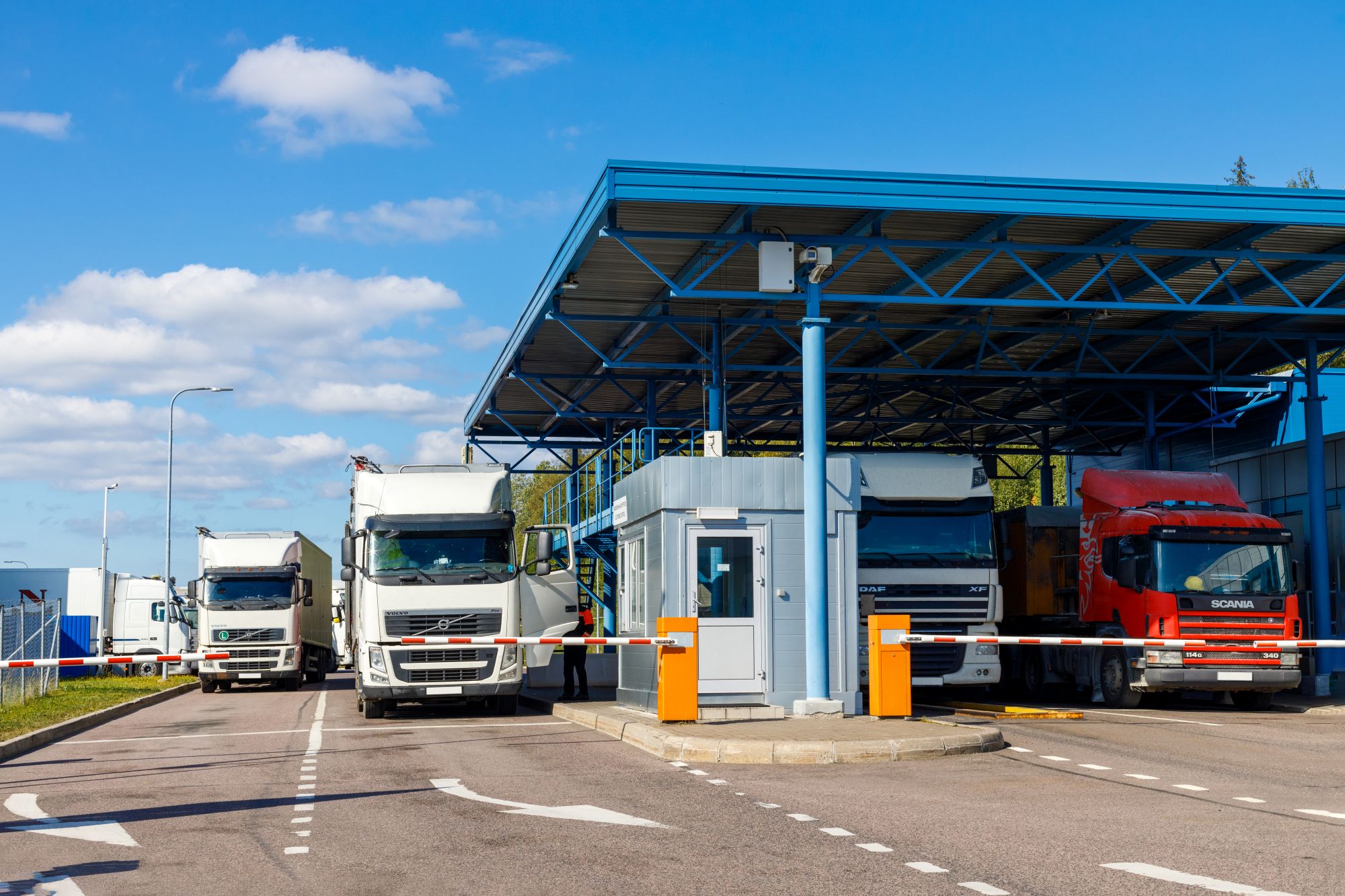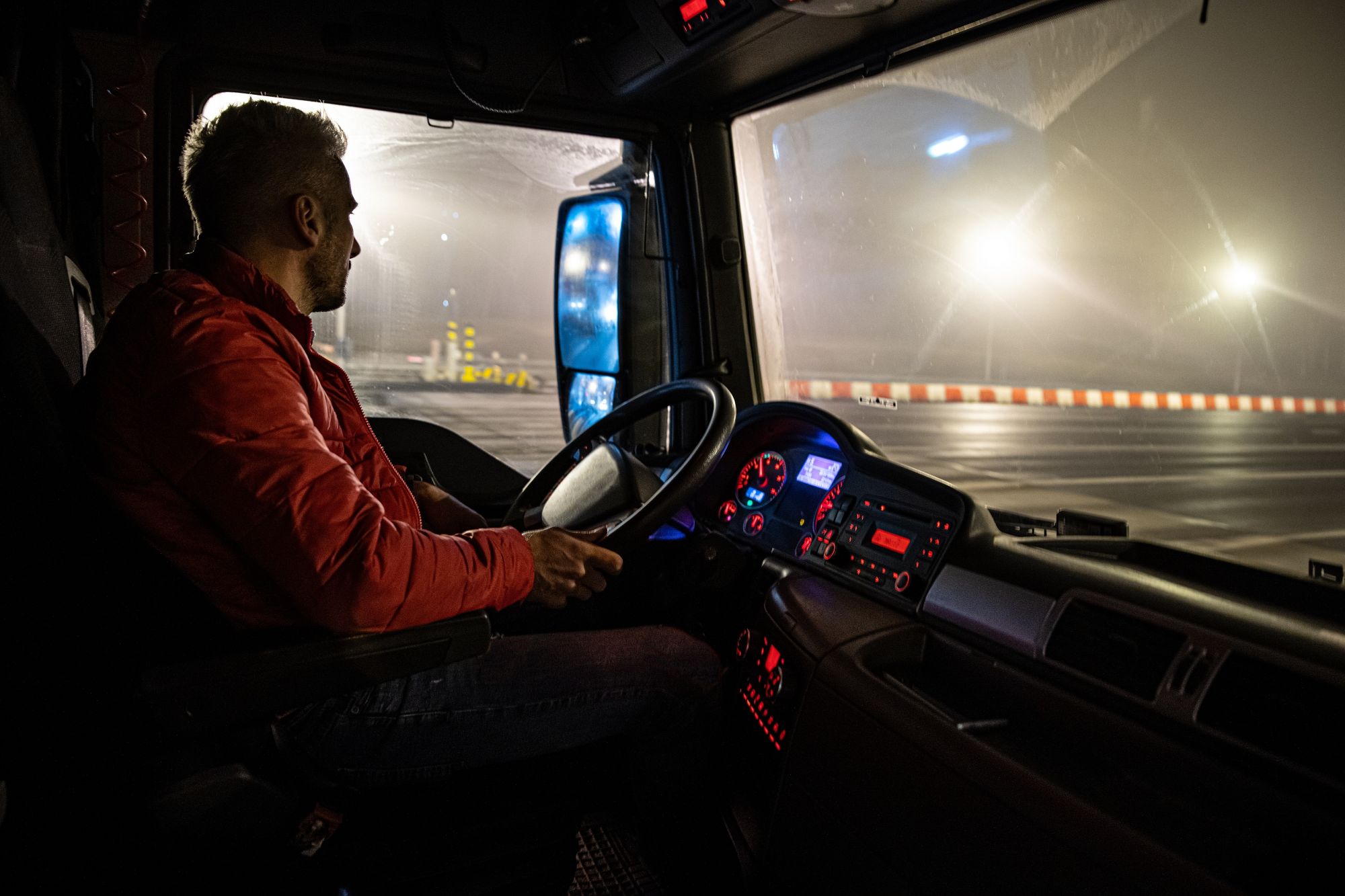
Guest
Polsko-ukrajinská hranice se znovu otevírá: Co by měli provozovatelé vozového parku vědět
Vytvořeno: 18.06.2025
•
Aktualizováno: 20.06.2025
Po měsících přerušení se nákladní doprava mezi Polskem a Ukrajinou opět volně pohybuje. Ale vzhledem k stále trvajícímu napětí a hrozbě obnovení blokád musí být provozovatelé vozových parků stále ve střehu a připraveni chránit blaho řidičů na obou stranách hranice.
Tento článek vysvětluje, co bylo příčinou přerušení provozu, jak ovlivnilo řidiče a jaké kroky můžete podniknout, abyste omezili dopady, pokud se stávka vrátí.
Co způsobilo blokádu polsko-ukrajinských hranic v roce 2024?
Situace začala koncem roku 2023, kdy polští řidiči kamionů začali protestovat na hlavních hraničních přechodech. Tvrdili, že rozhodnutí EU zrušit požadavky na povolení pro ukrajinské dopravce - zavedené jako dočasné válečné opatření - vedlo k přílivu levnějších dopravců, kteří podbízeli ceny polským firmám.
Protesty se stupňovaly, zablokovaly klíčové nákladní trasy na Ukrajinu a tisíce vozidel uvízly v kilometrových frontách. Na vrcholu blokády uvízlo na hranicích více než 5 000 kamionů a některé čekaly na přejezd déle než týden. Také řidiči z EU, kteří nejsou Ukrajinci, trpěli dlouhými zpožděními, napjatými jízdními řády a špatnými podmínkami.
To, co začalo jako logistický spor, přerostlo v širší protest polských řidičů kamionů proti ukrajinskému dovozu, přístupu na trh a dopadu mimořádných dopravních opatření EU. Brzy se přidali i polští zemědělci, kteří byli frustrováni vlivem ukrajinských zemědělských produktů na domácí ceny.
Polští řidiči také kritizovali ukrajinský elektronický systém řazení do front pro hraniční přechody - známý jako eCherha - a tvrdili, že znevýhodňuje dopravce z EU. Ačkoli byl systém navržen tak, aby zefektivnil pohyb nákladu tím, že dopravcům umožňuje předem rezervovat místa na přechodech, polští dopravci tvrdili, že ukrajinským firmám poskytuje větší flexibilitu a rychlejší přístup. Problémy, jako jsou jazykové bariéry, omezená integrace s logistickými systémy EU a nedůsledné provádění, způsobily, že mnoho řidičů z EU čekalo na hranicích déle, což dále podpořilo pocit nespravedlivého zacházení a přispělo k širším nepokojům.
Časová osa blokád polsko-ukrajinských hranic
Listopad 2023: Začínají protesty na přechodech Dorohusk, Hrebenne a Korczowa.
Prosinec 2023: Další přechody jsou blokovány, včetně Mediky; tři ukrajinští řidiči umírají při čekání ve frontách.
Leden 2024: Polská vláda se dohodla na přerušení blokády do března.
Březen-duben 2024: Občasné blokády na menších přechodech se obnoví.
Květen 2025: Začala nová čtyřměsíční blokáda Yahodyn-Dorohusk, ale soud ji zrušil.
Červen 2025: Všechny hlavní hraniční přechody zůstávají otevřené, ale riziko budoucího narušení zůstává.
Co dělá polská vláda pro zlepšení situace?
V reakci na narušení a jeho širší důsledky zaujala polská vláda aktivní postoj. Hraniční přechody s Ukrajinou byly označeny za kritickou infrastrukturu, což jim poskytuje větší ochranu před budoucími blokádami a pomáhá zajistit nepřetržitý tok nákladu, humanitární pomoci a vojenské podpory.
Byla rovněž zřízena nová Rada pro spolupráci s Ukrajinou, která má obecně posílit vazby mezi oběma zeměmi. Součástí jejího úkolu je zlepšit koordinaci v oblasti obchodu a dopravy. Současně Polsko investuje do infrastruktury na východní hranici a jedná s úředníky EU, aby prosadilo spravedlivější podmínky pro polské dopravce. Tato opatření sice nevyřeší situaci ze dne na den, ale signalizují dlouhodobý závazek ke stabilitě a strukturovanému dialogu.

Dopad na řidiče
Blokáda vytvořila nepřijatelné podmínky pro profesionální řidiče. Mnozí z nich trávili dny nebo týdny ve svých kabinách bez přístupu k toaletám, jídlu nebo tekoucí vodě. Někteří uvízli v mrazivých teplotách bez topení a přístřeší.
Tři ukrajinští řidiči zemřeli během blokády, k čemuž pravděpodobně přispělo vyčerpání a neléčené zdravotní potíže.
Přerušení provozu také způsobilo značnou psychickou a emocionální zátěž, zejména pro ukrajinské řidiče, kteří se v době války snažili dostat domů nebo se z něj vrátit. Zpoždění ovlivnilo nejen obchod, ale také přepravu pohonných hmot, pomoci a vojenského zboží, které má zásadní význam pro národní obranu Ukrajiny.
Zatímco polští protestující trvali na tom, že vozidla humanitární a vojenské pomoci mohou projíždět přes hranice, zprávy ukrajinských úřadů naznačují, že tomu tak vždy nebylo.
Tyto podmínky nebyly traumatizující pouze pro řidiče - odhalily také nedostatky v řízení rizik vozového parku a v plánování pro případ nouze. Provozovatelé nyní musí narušení hranic považovat za trvalou hrozbu.
Co by měli provozovatelé vozových parků vědět
Ačkoli se situace stabilizovala, základní napětí mezi polskými dopravci, ukrajinskými provozovateli a politikou EU zůstává nevyřešeno. Správci vozových parků působící v tomto regionu nebo v jeho blízkosti by měli být ostražití, pokud jde o možnost dalších protestních akcí - zejména v období sezónních tlaků nebo revizí politiky EU.
Zde jsou doporučení týmu SNAP pro efektivní zvládnutí situace:
1. Monitorování situace na polsko-ukrajinské hranici
Sledujte aktuální zprávy z polských a ukrajinských logistických sdružení a vládních zdrojů. Přihlaste se k odběru upozornění o provozu na hranicích a sledujte důvěryhodné logistické partnery, kteří vás budou informovat v reálném čase.
2. Plánujte flexibilní trasy
Mějte pohotovostní plány, které přesměrují vozidla přes Maďarsko, Slovensko nebo Rumunsko, pokud budou přechody mezi Polskem a Ukrajinou opět zablokovány.
3. Podpora blahobytu řidičů
Zajistěte, aby vaše vozy byly vybaveny základními potřebami: jídlem, vodou, powerbankami a lékárničkami.
V období nepokojů je přístup k bezpečnému parkování kamionů v Polsku nezbytný, aby vaši řidiči byli v bezpečí, odpočatí a mimo silnice. Vybavte řidiče aktuálními informacemi o bezpečných parkovištích pro kamiony a odpočívadlech na jejich trase.
Naše aplikace intruck obsahuje interaktivní mapu parkovišť pro nákladní vozidla s 11 000 poskytovateli služeb pro nákladní vozidla v celé Evropě, včetně Polska, Maďarska a Slovenska. Jedná se o snadno použitelný nástroj pro vyhledání bezpečných odpočívadel pro nákladní vozidla v Polsku, což je obzvláště cenné v období protestních akcí.
Přestože aplikace v současné době nenabízí možnost rezervace parkovacích míst pro kamiony na Ukrajině, ukrajinští provozovatelé a řidiči mohou pomocí aplikace intruck vyhledat spolehlivá odpočívadla v EU během dálkových cest nebo v době přerušení provozu.
4. Rezervujte si bezpečné parkování pro kamiony v Polsku
Vzhledem ke zvýšené poptávce v obdobích narušení je rezervace předem velmi důležitá. Řidiči mohou také využít službu intruck k vyhledání a rezervaci důvěryhodného parkoviště pro kamiony v Polsku s předstihem. Ať už vaše vozidla cestují hluboko do východní Evropy, nebo se vracejí na západ, umožní vašim řidičům přístup k parkovišti pro nákladní vozidla v blízkosti Varšavy a dalších frekventovaných oblastí.
5. Pravidelně komunikujte s řidiči
Stanovte harmonogramy odbavení, zejména pokud se očekává dlouhé čekání nebo odbočky. Ujistěte řidiče, že jejich pohoda je prioritou, a poskytněte jim podporu v případě neočekávaného zpoždění. Pokud je to možné, navrhněte předem bezpečná parkoviště pro nákladní automobily na Ukrajině, aby věděli, kde si mohou udělat přestávku.
Výhled do budoucna
Znovuotevření polsko-ukrajinské hranice je vítanou zprávou pro flotily působící ve východní Evropě. Vzhledem k nevyřešenému politickému napětí je však nutné zůstat připraven.
"Situace se rychle mění," říká Nick Renton, vedoucí evropské strategie a rozvoje podnikání ve společnosti SNAP. "Vzhledem k možnosti dalšího narušení polsko-ukrajinské hranice doporučujeme provozovatelům vozových parků zavést důkladné plány, které upřednostní pohodu řidičů a minimalizují provozní rizika. To zahrnuje začlenění flexibility do harmonogramů dodávek, zajištění základních zásob ve vozidlech a zajištění přístupu řidičů k bezpečnému parkování nákladních vozidel.
"Naše síť rezervovatelných zastávek pro kamiony po celé Evropě a v Polsku vám dává nástroje, které vám umožní zůstat flexibilní - nabízí klid jak provozovatelům, tak řidičům, když se podmínky na zemi stanou nepředvídatelnými."
Podívejte se na naši interaktivní mapu bezpečné parkování kamionů v Polsku dnes.



